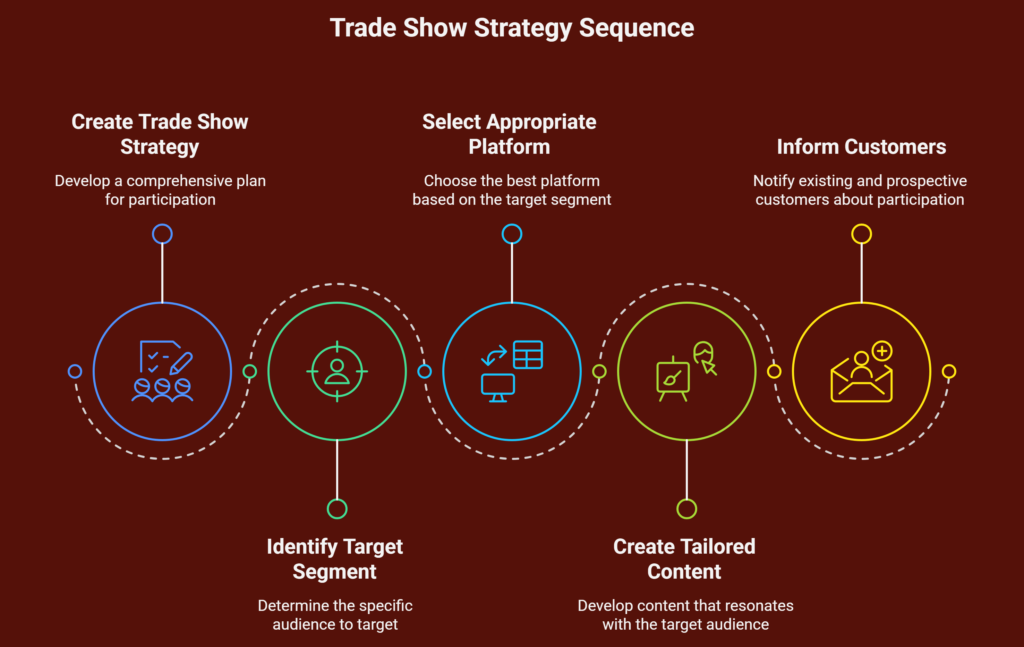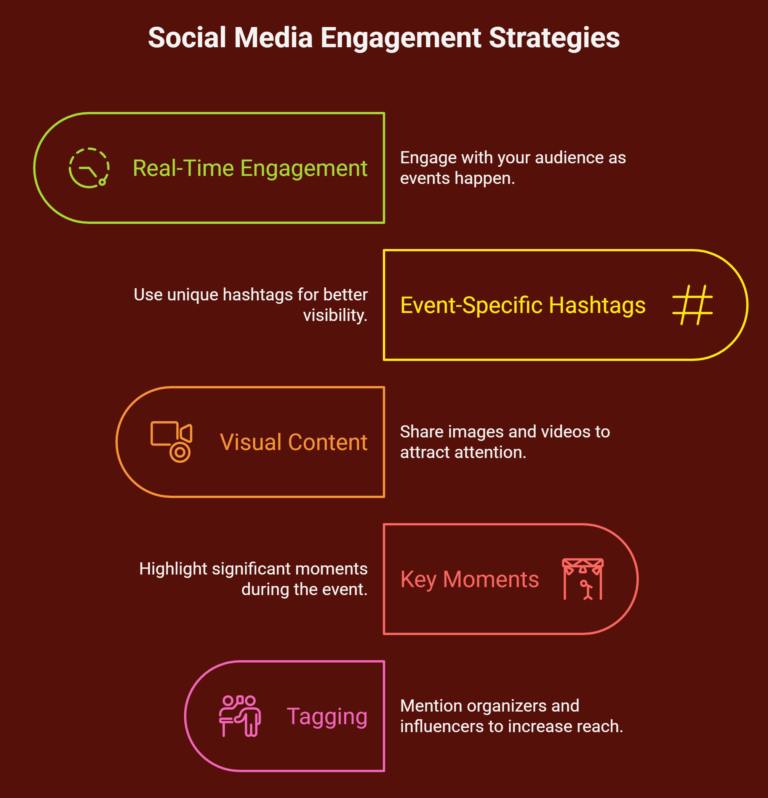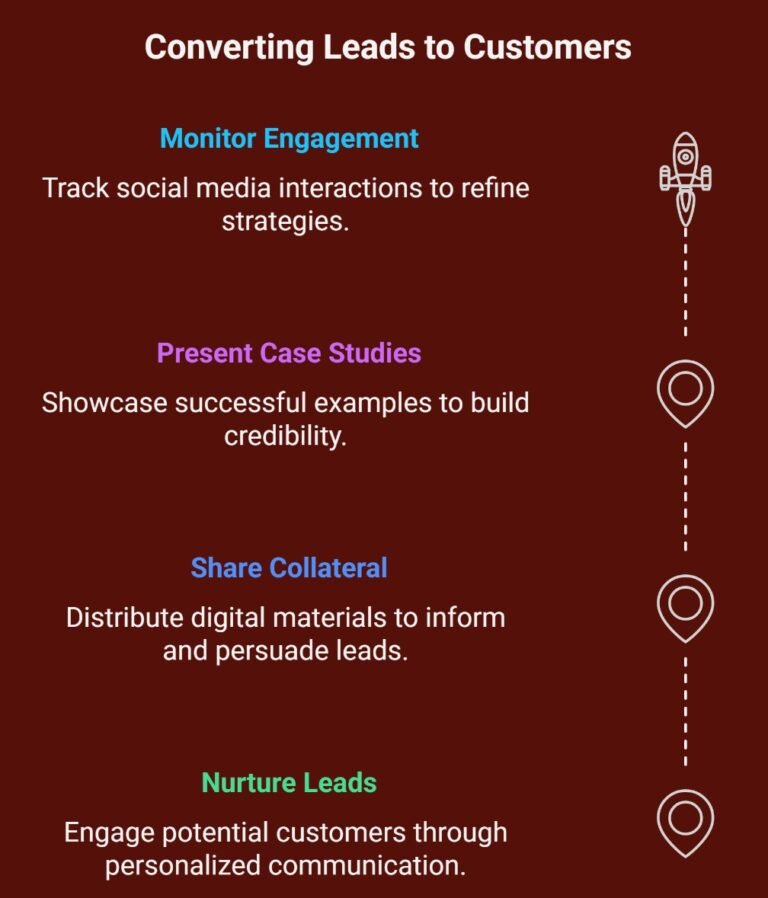The Role of Trade Shows in B2B Marketing & The Power of Social Media
Introduction: The Significance of Trade Shows in B2B Sales & Marketing

Trade shows have been vital in business-to-business (B2B) marketing for over a century. Since the first “Great Exhibition” held at Hyde Park, London, on May 1, 1851, industry conventions and exhibitions have helped businesses showcase their products, connect with potential clients, and stay ahead of industry trends.
In today’s fast-paced and competitive market, trade shows remain a mainstay of B2B marketing because they effectively bring together marketing, lead generation, personal selling, and networking into one dynamic platform. These events provide businesses with an opportunity to:
- Showcase their latest products and services
- Connect with high-value decision-makers
- Strengthen relationships with existing customers
- Generate new leads and sales opportunities
- Gain insights into market trends and competition
However, despite the advantages, rising competition has made it increasingly difficult for medium and small-sized enterprises (SMEs) to gain the same level of visibility and success as larger corporations. The sheer number of exhibitors at trade shows creates marketing noise, making it harder for brands to stand out.
This is where digital marketing and social media emerge as game-changers. By integrating social media into trade show strategies, companies can amplify their presence, engage a wider audience, and maximize their return on investment (ROI).
Social Media Marketing for Trade Shows

Social Media Strategy Before the Trade Show
1. Create a Trade Show Strategy
How:
Define clear objectives (e.g., boost product sales, build brand recognition, or share new product information).
Develop a messaging and content plan tailored to these goals.
Why:
A well-crafted strategy ensures that all social media efforts are aligned with your trade show objectives, making your campaign more focused and effective.
2. Identify the Appropriate Target Segment
How:
Determine who you’re trying to reach by analyzing customer demographics and behavior.
Identify the social media platforms they frequent and assess their level of activity on those platforms.
Why:
Understanding your target audience ensures your content reaches the right people, leading to more meaningful engagement and better conversion rates.
3. Select the Appropriate Social Media Platforms
How:
Research which social channels are most popular among your target segment.
Focus your efforts on those platforms to maximize the impact of your content.
Why:
Choosing the right platforms increases the likelihood of connecting with your audience where they are most active, ensuring a higher engagement rate.
4. Create Content Tailored to Your Target Audience
How:
Develop posts, videos, images, and articles that speak directly to your audience’s interests and pain points.
Use a consistent tone and branding that reflects your organization.
Why:
Tailored content resonates more with your audience, making them more likely to engage with your brand and share your messages.
5. Inform Your Customers About Your Trade Show Participation
How:
Announce your participation through teasers, press releases, and pre-event posts.
Reach out to existing and prospective customers via social media, email, and direct messages.
Schedule meetings and share digital marketing collateral (brochures, e-books, etc.).
Why:
Early communication builds anticipation, drives booth traffic, and ensures that your key customers and prospects are aware of your presence at the event.

Social Media Marketing During the Trade Show
1. Create Real-Time Engagement
How:
Post live updates, behind-the-scenes content, and interactive polls throughout the event.
Use live streaming to broadcast product demos and special moments.
Why:
Real-time engagement keeps your audience involved, even if they aren’t physically present, and creates a dynamic atmosphere around your brand.
2. Use Event-Specific Hashtags
How:
Develop and promote a unique hashtag for your event.
Encourage both staff and attendees to use it when posting about the trade show.
Why:
Hashtags consolidate event-related content, making it easier for audiences to follow the conversation, and expand your reach to those unable to attend.
3. Share Visual Content
How:
Capture high-quality images and videos of your booth, product demos, and interactions.
Post these visuals on your social channels with engaging captions.
Why:
Visual content attracts more attention and is more likely to be shared, increasing both your brand’s visibility and audience engagement.
4. Highlight Key Moments
How:
Identify and share standout moments (e.g., product launches, keynote speeches, awards) as they happen.
Use Instagram Stories, tweets, or live videos to showcase these moments.
Why:
Highlighting key moments sustains event momentum and reinforces your brand’s dynamic presence, making a lasting impression on your audience.
5. Tag Event Organizers and Influencers
How:
Mention and tag event organizers, sponsors, and influencers in your posts.
Engage with their content to foster a collaborative online atmosphere.
Why:
Tagging enhances your post’s visibility through cross-promotion, tapping into the networks of other influential participants, and increasing your overall reach.

Social Media Marketing After the Trade Show
1. Nurture Leads into Potential Customers
How:
Follow up with attendees through personalized messages, emails, and dedicated posts.
Use lead nurturing campaigns on social media to keep the conversation going.
Why:
Ongoing engagement transforms initial trade show interest into loyal customers by building deeper relationships and trust.
2. Share Digital Collateral, Case Studies & Testimonials
How:
Publish case studies, customer testimonials, and success stories on your website and social media channels.
Create downloadable content (e-books, brochures) that highlight your achievements.
Why:
Social proof in the form of testimonials and case studies boosts your credibility and reinforces your brand’s value proposition.
3. Monitor Social Media Engagement
How:
Use analytics tools to track post-event engagement metrics (likes, shares, comments, clicks).
Evaluate which content resonated the most and adjust future strategies accordingly.
Why:
Monitoring engagement provides valuable insights into your campaign’s success, enabling you to fine-tune your approach for better results and sustained brand awareness.
Conclusion
Integrating social media into every phase of your trade show strategy—before, during, and after the event—is essential for driving long-term business success in today’s competitive market. By planning ahead with a solid strategy, you ensure that your objectives are clearly defined and your target audience is effectively reached through the most appropriate platforms. This pre-show groundwork not only builds anticipation but also sets the stage for higher engagement at the event.
During the trade show, real-time engagement and dynamic content sharing help maintain momentum, allowing you to capture and share the energy of the event with a broader audience. Techniques such as using event-specific hashtags, sharing visual content, and tagging key players enhance your online presence, foster community engagement, and extend the impact of your participation beyond the physical venue. These efforts create a rich tapestry of live interactions that resonate with both attendees and those following remotely, ensuring that your brand remains top-of-mind.
Post-show activities are just as crucial. Following up with leads, sharing digital collateral, and monitoring social media metrics allow you to nurture relationships and transform initial interest into long-term loyalty. This phase provides the opportunity to showcase success stories and customer testimonials, which in turn build credibility and trust in your brand. By analyzing engagement data, you gain valuable insights that help refine future strategies, ensuring continuous improvement and sustained growth.
Overall, this comprehensive approach leverages social media to maximize the benefits of trade show participation. It not only increases brand visibility and foot traffic during the event but also sustains engagement and brand recall long after the trade show concludes. With a clear understanding of the how and why behind each step, your organization is well-positioned to convert trade show interactions into lasting business relationships and measurable growth.
